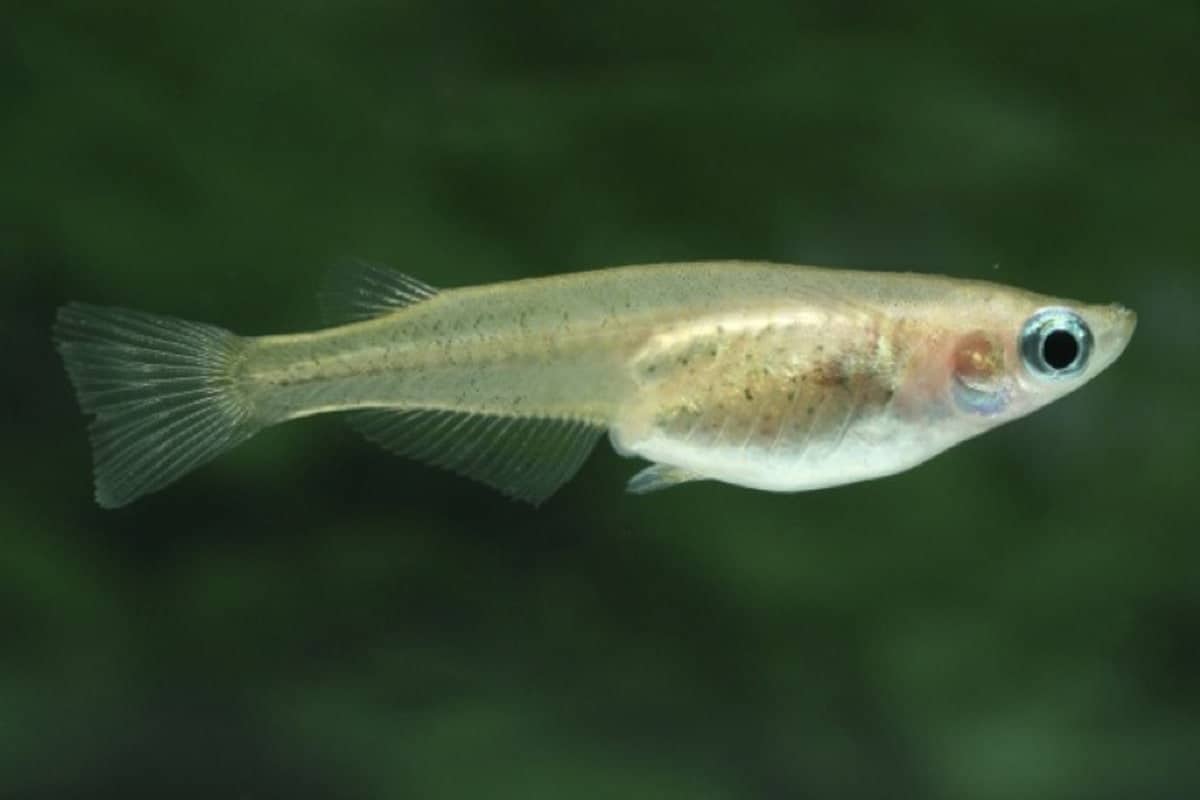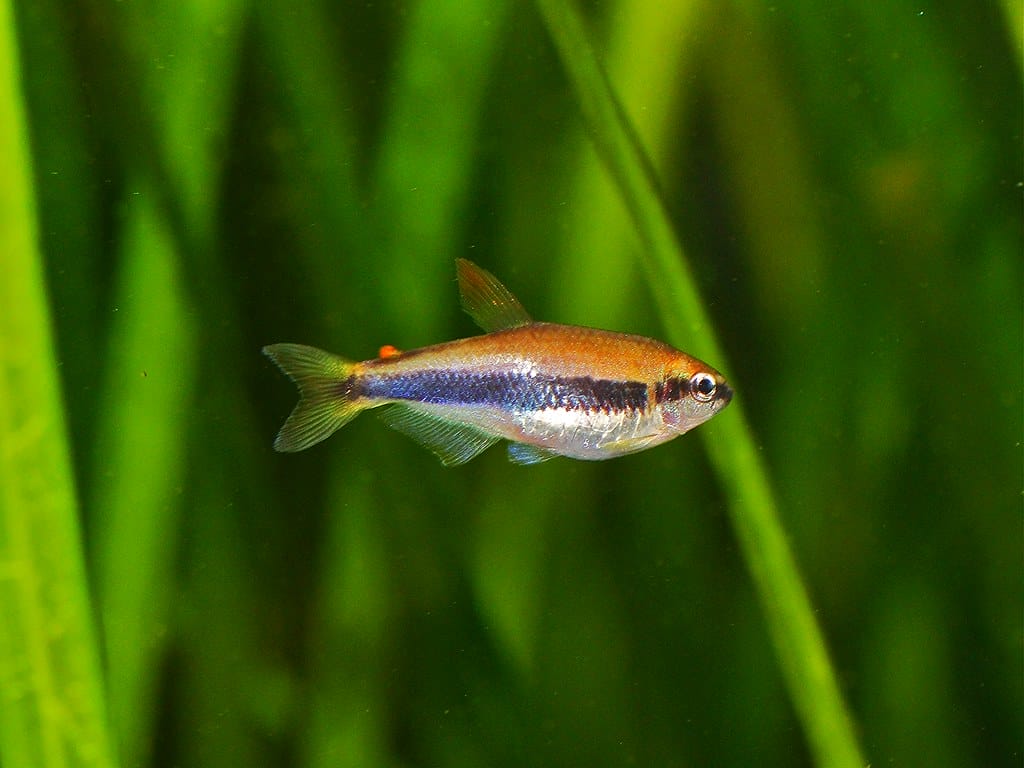
Discover the Beauty of Ember Tetras in Your Aquarium

Brighten up your aquarium with the lovely ember tetra. These small, peaceful fish are famous for their bright red-orange color. They make a striking addition to any freshwater tank. Ember tetras come from the rivers of South America. They add a piece of the Amazon Basin’s beauty to your home.

Read More : Top 24 Nano Fish Perfect for Your Small Tank
Understanding Ember Tetras
Ember tetras, also called Hyphessobrycon amandae, are a new type of fish for aquariums. They were first described in 1987. Even though they are recent to the hobby, they quickly became popular. Their hardiness, peaceful nature, and beautiful colors attract many.
In an aquarium, they are fun to watch. They swim among plants or group together in open water. Their small size makes them easy to care for, which is great for new aquarium owners.
Origin and Natural Habitat
Hyphessobrycon amandae, known as the ember tetra, comes from the warm waters of the Araguaia River Basin in South America. This area in Brazil has blackwater streams and small rivers that flow through thick rainforests. This creates a special water environment.
In their natural habitat, ember tetras live in shallow areas of these blackwater environments. The water is a dark tea color because of the tannins and other organic materials from decaying leaves. It usually has soft and acidic water with low minerals.
These conditions are important when setting up an aquarium for ember tetras. Replicating their natural habitat will help them do well in captivity.
Physical Appearance and Size
Ember tetras have a typical tetra shape. You can easily recognize them by their flat bodies and a small fin between their dorsal and tail fins. What stands out the most is their bright color.
The entire body of an ember tetra has a lovely red-orange color. Males usually have a brighter shade than females. This bright color looks almost even on their scales but turns a mild translucency near the pelvic fin. A good diet rich in carotenoids can make their color even more vibrant.
As adults, ember tetras stay small. They only grow to about 2 cm (0.8 inches) long. This size makes them ideal for nano aquariums and small community tanks.

Setting Up the Perfect Aquarium for Ember Tetras
Rebuilding a natural-looking home for your ember tetras makes your aquarium more beautiful. It also helps the fish stay healthy. Ember tetras do best in waters similar to their home in the Araguaia River Basin.
When you set up their aquarium, remember to use soft, acidic water. Make sure you have gentle filtration, plenty of plants, and a dark substrate. These things help create a calm place where your ember tetras can thrive.
Ideal Tank Size and Conditions
Ember tetras are small but active fish. They show their best natural behavior when they are in groups. For a school of 6-8 ember tetras, a tank size of at least 10 gallons is good. If you want to keep a larger school of 20 or more, look for a tank that is 20 gallons or bigger.
Good water quality is very important. Keep the water temperature between 72°F and 84°F. The pH level should be between 5.0 and 7.0, and the water should be soft to moderately hard. You should also change 25% of the water every two weeks. This helps to keep everything stable and lowers the nitrates in the water.
Ember tetras like gentle filtration. Using a sponge filter can be a great idea. It provides good biological filtration and keeps the water flow low. This way, the fish won’t be pushed around too much in the tank.
Choosing the Right Plants and Substrate
A well-planted tank is important for ember tetras. Live plants make the aquarium look nice. They also give shelter, lower stress, and help keep the water healthy by using nitrates and giving oxygen.
Here are some good plant choices for an ember tetra tank:
- Java Moss: Easy to care for and gives great cover.
- Amazon Sword: Has wide leaves for resting and looks striking.
- Cryptocoryne Species: Do well in low light and offer hiding spots.
To imitate their natural habitat, use a dark substrate like fine gravel or sand. Adding leaf litter will improve the look of blackwater and provide more hiding places. Driftwood helps create their natural environment too. It can release tannins into the water, helping to keep the slightly acidic pH that ember tetras like.

Caring for Your Ember Tetras
Ember tetras are easy to care for. They are a great option for both new and experienced fish keepers. You should give them a well-kept tank that is the right size and has suitable water conditions. This helps keep them healthy.
Feed them on a regular schedule and offer a varied diet. Also, watch for any health problems. Doing these things will help your ember tetras live a long and lively life, adding beauty to your aquarium.
Daily Diet and Nutrition Requirements
Ember tetras can eat many different foods. They have a mixed diet that includes plants and meats. They like high-quality flake foods and small micro-pellets. It is a good idea to add small live or frozen foods to their diet. This will help them stay healthy and look colorful.
Here are some great foods to add to their meals:
- Brine Shrimp (Artemia nauplii): Full of protein and easy for ember tetras to eat.
- Daphnia: Small crustaceans that provide lots of nutrients.
- Bloodworms: A good source of iron and protein.
- Microworms: Ideal for baby and young ember tetras.
Feed your ember tetras small meals several times a day. This is better than one large meal. It prevents overfeeding and makes sure they can eat throughout the day.
Common Health Issues and Prevention
As with all fish species, ember tetras can get sick. However, you can avoid many health problems with good care and preventive steps. Keeping the water quality clean is very important. It really helps to lower the chance of illness.
You should change 20-25% of the water every one to two weeks. Using a good water conditioner to get rid of chlorine and chloramines is also helpful. This will keep the environment safe for your fish. When you get new fish, make sure to quarantine them for at least two weeks before putting them in your main tank. This can stop diseases or parasites from spreading.
Ember tetras are strong fish, but they can still get common problems like ich, fin rot, and parasites. If you see strange behaviors, like being slow, not eating, or finding white spots on their bodies, it’s important to act fast. Talk to an aquatic veterinarian or a staff member at a fish store to help you right away.

Conclusion
Ember Tetras can add color and beauty to your aquarium with their bright red colors and calm nature. It’s important to know about their natural habitat, tank needs, and how to care for them properly.
By making a good environment and giving balanced food, you can help these lovely fish live long and healthy lives in your aquarium. Make sure to keep the water quality high, provide a varied diet, and regularly check their behavior.
With the right setup and care, Ember Tetras can do well and bring joy to your underwater world. Get ready to explore the amazing Ember Tetras and build a beautiful aquatic space!

Frequently Asked Questions
How often should Ember Tetras be fed?
It’s best to feed your ember tetras small meals two to three times a day. Watch them while they eat. Make sure they eat all the food within a few minutes. Do not overfeed them, as extra food can harm water quality. A good diet should include flake foods, small invertebrates, and treats like brine shrimp.
Can Ember Tetras coexist with shrimp?
Ember tetras are usually calm and can live peacefully with larger dwarf shrimp. However, they might eat baby shrimp if they can fit them in their mouths. If you want to keep them together, make sure to add many plants. This gives shrimp a place to hide. Both types of fish can be good tankmates, but remember to think about the safety of baby shrimp in the tank.





